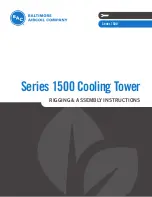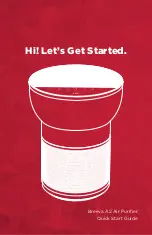
5566020-JIM-C-1019
Johnson Controls Ducted Systems
53
Method two
1.
Drill two 5/16 inch holes, one in the return air duct as close
to the inlet of the unit as possible, and another in the supply
air duct as close to the outlet of the unit as possible.
2.
Using the hole drilled in step 1, insert eight inches of 1/4
inch metal tubing into the airflow of the return and supply
air ducts of the unit.
Note:
You must insert the tubes and hold them in a position
perpendicular to the air flow so that velocity pressure
does not affect the static pressure readings.
3.
Use an inclined manometer or Magnehelic® to determine
the pressure drop across the unit. This is the external static
pressure (ESP). In order to obtain an accurate
measurement, verify that the air filters are clean.
4.
Determine the number of turns the variable motor sheave
is open.
5.
Select the correct blower performance table for the unit
from
Airflow performance on page 48
21. Tables are
presented for side and bottom duct configuration.
6.
Determine the unit measured CFM from the blower
performance table, external static pressure, and the
number of turns the variable motor sheave is open.
7.
To adjust measured CFM to required CFM, see
8.
After you note the reading, remove the tubes and seal the
holes.
9.
Tighten the blower pulley and motor sheave set screws
after any adjustments. Re-check the set screws after 10-12
hours run time.
Note:
You must repeat this procedure with the addition of
field-installed accessories.
Figure 31: Dry coil delta P
Failure to properly adjust the total system air quantity
can result in extensive blower damage.
Failure to properly adjust the total system air quantity
can result in extensive blower damage.
0
0.05
0.1
0.15
0.2
0.25
0.3
0.35
0.4
0.45
0.5
1500
2000
2500
3000
3500
4000
4500
5000
5500
6000
6500
Airflow (CFM)
Dry Coil Delta P (iwg)
J06ZF
J07ZF
J08ZF
J10ZF
J12ZF
















































